ICC Rules If a Bowler Throws Two Waist Height No Balls

Cricket, known as a gentleman's game, is governed by a set of rules and regulations established by the International Cricket Council (ICC). These rules ensure fair play and maintain the integrity of the game. One such rule that has garnered attention in recent times is the ICC rule regarding waist height no balls.
Also Read: Best Dream11 Prediction Telegram channel
In cricket, a no-ball is called when a bowler oversteps the crease while delivering the ball, resulting in an extra run for the batting team and a free hit for the next delivery. However, if a bowler consistently bowls waist height no balls, it can have serious repercussions. Let's delve into the ICC rules if a bowler throws two waist-height no balls and understand how it affects the game.
What are Waist Height No Balls?
A waist height no ball is a type of no ball where the ball, when it passes the batsman, is above the waist height of the batsman standing upright at the popping crease. According to the ICC rules, a waist height no ball is considered dangerous and poses a threat to the safety of the batsman.
The height of the waist is defined as the midpoint between the top of the hip and the bottom of the ribs. Any delivery that crosses this height is deemed as a waist height no ball, regardless of the type of delivery - be it a fast bowler's bouncer or a spinner's full toss.
ICC Rules If a Bowler Throws Two Waist Height No Balls
The ICC takes waist height and no balls seriously and has specific rules in place to address this issue. According to the ICC rulebook, if a bowler bowls two or more waist height no balls in an inning, the following consequences apply:
Warning: The bowler receives a warning from the umpire after the first waist height no ball is bowled. The umpire signals a no ball and alerts the bowler that it was a waist-height no ball.
Free Hit: The batsman at the crease gets a free hit for the next delivery after the waist height no ball. This means that the batsman cannot be dismissed by any means other than a run-out on the next ball, and the fielding team cannot claim a wicket off that delivery.
Suspension: If the same bowler bowls another waist-height no ball after receiving a warning and conceding a free hit, the umpire can suspend the bowler from bowling further in that innings. The suspension lasts until the end of the innings, and the bowler cannot bowl again.
Penalty Runs: In addition to the suspension, the batting team is also awarded five penalty runs. These runs are added to the batting team's total and can significantly impact the outcome of the match.
Also Read: How to win money from Possible 11
It's important to note that these consequences apply only to waist height no balls and not to other types of no balls, such as front foot no balls or back foot no balls.
Harshal Patel acting like he doesn't know the '2 waist high noball' rule pic.twitter.com/fzdbNV7buc
— ಬೆಂಗಳೂರು ಅಡ್ಡ (@bengaluruadda) April 17, 2023
Also Read: Top 10 Richest Sports Leagues In The World Now 2023
Consequences of Two Waist Height No Balls
The consequences of a bowler throwing two waist-height no balls can be severe and have a significant impact on the game. Let's take a closer look at how it affects different aspects of the game:
Batsmen's Safety: Waist height no balls are considered dangerous as they pose a threat to the batsman's safety. A fast bowler's bouncer or a spinner's full toss above the waist can cause serious injuries to the batsman, including head injuries. The ICC's strict stance on waist height no balls is aimed at ensuring the safety of the batsmen and preventing any potential injuries.
Team's Performance: Two waist-height no-balls by a bowler can result in penalty runs and a free hit for the batting team. The five penalty runs can significantly impact the total score of the fielding team and can potentially change the outcome of the match. Moreover, a free hit allows the batsman to play a shot without the fear of getting dismissed, giving the batting team an advantage to scoring freely.
Bowler's Performance: For the bowler who bowls two waist height no balls, the consequences can be detrimental. The warning and suspension from bowling further in the innings can affect the bowler's rhythm and confidence. Additionally, the penalty runs awarded to the batting team can further dent the bowler's performance statistics, affecting their overall performance in the match.
Team's Strategy: The suspension of a bowler from bowling further in the innings can disrupt the team's bowling strategy. The captain and the team management may need to reshuffle their bowlers and come up with alternative plans to fill the gap left by the suspended bowler. This can impact the overall game plan of the fielding team and may require adjustments on the field.
Also Read: Most Richest IPL Team of Indian Premier League 2023 Updated List
Frequently Asked Questions (FAQ)
What is the purpose of the ICC rules regarding waist height no balls?▼
The ICC rules regarding waist height no balls are aimed at ensuring the safety of the batsmen and preventing potential injuries caused by deliveries above the waist height.
What happens if a bowler bowls two waist height no balls in an innings?▼
If a bowler bowls two waist height no balls in an innings, they receive a warning after the first one, a suspension from bowling further in the innings after the second one, and the batting team is awarded five penalty runs.
Can a bowler be suspended for bowling waist height no balls in subsequent innings?▼
No, the suspension only applies to the current innings in which the bowler bowls two waist height no balls. In the next innings, the bowler starts with a clean slate, and the warning and suspension do not carry over.
Can the batsman be dismissed off a free hit after a waist height no ball?▼
No, the batsman cannot be dismissed by any means other than a run-out off a free hit after a waist height no ball.
Can the bowler continue to field after being suspended from bowling for two waist height no balls?▼
Yes, the bowler can continue to field but cannot bowl again in the current innings after being suspended from bowling for two waist height no balls.


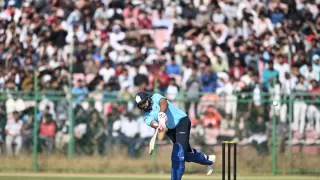


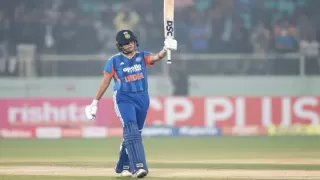

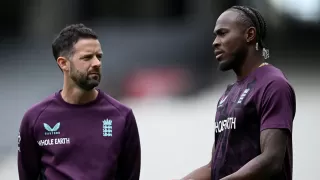

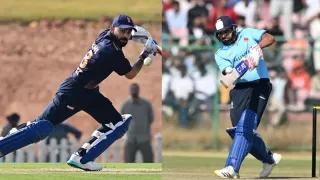
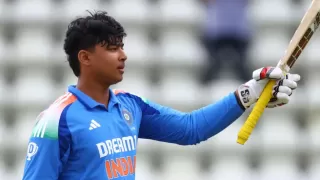
Give Your Feedback